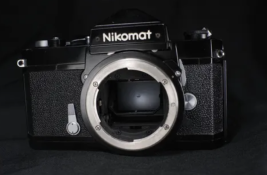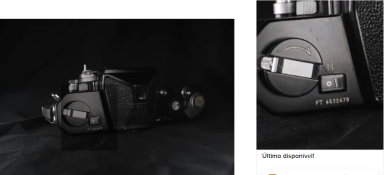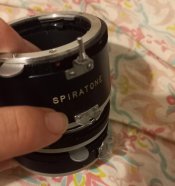allohse
Member
Hello. Second time posting on the forum!
I've only started with film photography and I'm thinking about buying a japanese Nikon Nikomat SLR camera (it is not a Nikkormat!). I have a few questions though: first and foremost, will it be compatible with the more modern analog Nikon lenses I already have here? I also have some lens adapters for Nikon cameras, do you think they'll work with it? If I'm not mistaken the Nikomat is from the 60s, right?
Also, I heard somewhere that the light meter uses a kind of battery that is not in production anymore. Is it worth it anyway? I could use an app on my phone or buy a light meter, but it seems kind of inconvenient.
The ones I really wanted were a Nikon FM-2 or F2/F3 but they are way too expensive for me right now. I could also try other brands, but I already have a lot of Nikon lenses and adapters here so it does not seem worth it. I also thought about buying a Nikon F-601, but it appears to be very plastic-y and I don't really trust the durability (reliability?) of the electronic parts. I also saw a review saying it does not work very well with manual focus lenses, is it true?
Anyway, thanks y'all.
edit: uploaded a picture with the serial number
I've only started with film photography and I'm thinking about buying a japanese Nikon Nikomat SLR camera (it is not a Nikkormat!). I have a few questions though: first and foremost, will it be compatible with the more modern analog Nikon lenses I already have here? I also have some lens adapters for Nikon cameras, do you think they'll work with it? If I'm not mistaken the Nikomat is from the 60s, right?
Also, I heard somewhere that the light meter uses a kind of battery that is not in production anymore. Is it worth it anyway? I could use an app on my phone or buy a light meter, but it seems kind of inconvenient.
The ones I really wanted were a Nikon FM-2 or F2/F3 but they are way too expensive for me right now. I could also try other brands, but I already have a lot of Nikon lenses and adapters here so it does not seem worth it. I also thought about buying a Nikon F-601, but it appears to be very plastic-y and I don't really trust the durability (reliability?) of the electronic parts. I also saw a review saying it does not work very well with manual focus lenses, is it true?
Anyway, thanks y'all.
edit: uploaded a picture with the serial number
Attachments
Last edited:













